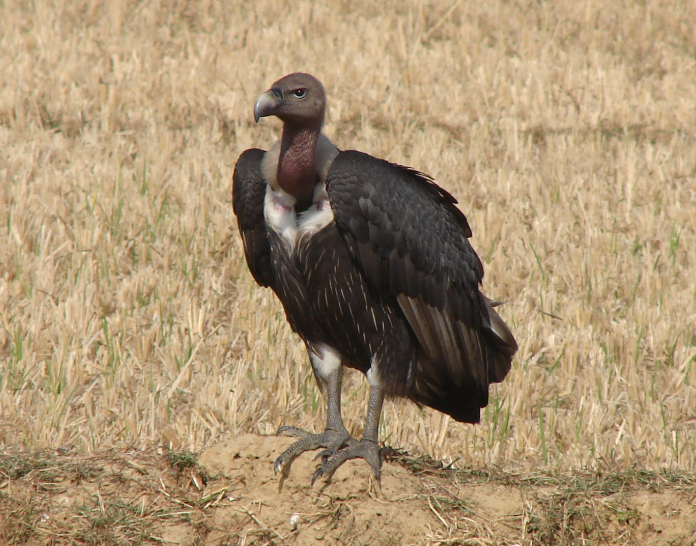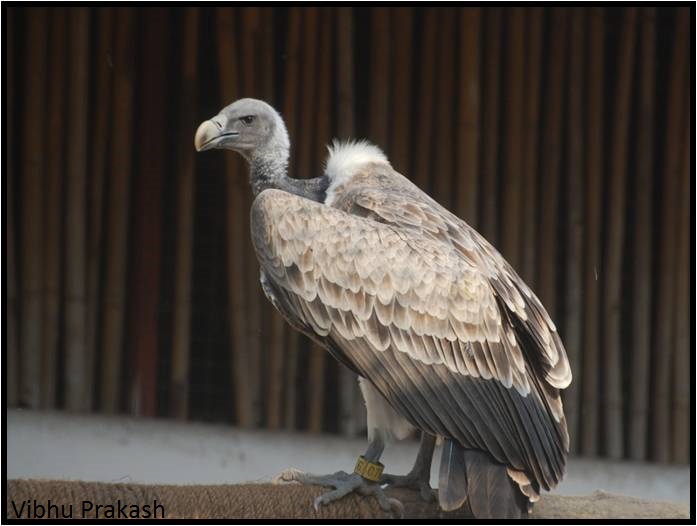
Experts laud environment ministry’s 'progressive steps' to protect vultures
At a time when many of the policies of Ministry of Environment, Forests and Climate Change (MoEFCC) are being criticised by the environmentalists, its recent ‘action plan’ to conserve vultures is being lauded by experts. They say, the second action plan has more progressive steps than the earlier one.

Many policies of the Ministry of Environment, Forests and Climate Change (MoEFCC) have come in for severe criticism from environmentalists, but its recent ‘action plan’ to conserve vultures is being lauded by experts. They say the second action plan has more progressive steps than the earlier one.
Among bird species, vultures are the ones painted badly by humans. A vulture’s physiology makes people to stay away from it. It has been demonised by comparing it with human greed, through caricatures and metaphors.
They are the scavengers of our environment. They eat animal carcasses and help us prevent diseases spreading through those wastes. Because of this, the birds are looked down upon by humans.
Related News: A money-making venture for cattle farmers is saving vultures from extinction in TN
There are 23 different species of vultures found across the world of which nine are in India. In Tamil Nadu, four species are found commonly in the Moyar river basin.
“There is no official data available on the exact population of vulture species in the country. But there are individual estimates. The total population of all species of vultures could be about 12,000,” said S Bharathidasan, founder, Arulagam, a Coimbatore-based organisation working towards conservation of vultures.
In the 90s, there was a rapid decrease in the vulture population. In 2004, it was proved that Diclofenac, a painkiller, found in cattle steroids is the major reason for the decrease in vulture numbers.
In 2006, the environment ministry came out with its first action plan for three years to protect them. It had suggested that the usage of Diclofenac for cattle should be banned in the country. The same year, the single dose Diclofenac usage for veterinary use was banned. However, cattle keepers started using multi-dose Diclofenac which was meant for human usage. After many struggles, it was also banned in India in 2015.
“Besides banning Diclofenac, we had demanded other measures like establishing vulture rescue centres. But those demands were not heard and, hence, the first action plan was insufficient. The second action plan has more comprehensive measures. Since India has become a signatory to the 13th Convention on Conservation of Migratory Species and Wild Animals, which was held in Gujarat earlier this year, the environment ministry is trying its best to conserve vultures,” added Bharathidasan.
The safety testing of available molecules of veterinary non-steroidal anti-inflammatory drugs (NSAID) on vultures is one of the major steps, he said.
“The new molecules should be introduced in the market only after they are proved to be safe following safety testing on vultures. The Drug Controller General of India must institute a system that automatically removes a drug from veterinary use if it is found to be toxic to vultures,” he said.
The first action plan suggested having more vulture breeding centres in the country, where vultures are bred in captivity and released into the wild. Before that, only Haryana had a centre that was set up in 2004. In the last 16 years, eight centres have been set up. In order to expand the conservation work, the action plan has recommended forming centres in five states — Uttar Pradesh, Maharashtra, Tripura, Karnataka and Tamil Nadu.

“Since the country has lost 99% of vultures, each and every individual surviving bird is important. Other than Diclofenac, the vultures get killed by colliding with power structures, electrocution and by flying kites. In order to treat them, we don’t have specialised vulture rescue centres anywhere in the country. The action plan has suggested establishing such centres in four places namely Haryana, Bhopal, Hyderabad and Assam,” said Dr Vibhu Prakash, an authority on vultures and deputy director, Bombay Natural History Society.
The action plan proposed to have at least one ‘vulture safe zone’ in each state for the conservation of the remnant population in that state.
“Vultures are known to fly about 100 km in a day. So, if a vulture is found in a place while nesting, in a 100 km radius, there should not be any toxic drug usage or any other activity that would disturb them. That place should also have sufficient food for vultures. That is called a ‘vulture safe zone’. This will be identified in all the states and each state will have at least one such zone,” said Prakash, who is also one of the members of the task force that drafted this action plan.
It is recommended that the NSAIDs are put in Schedule-X of the Drug and Cosmetics Act 1940, which makes it mandatory for chemists to sell the drugs only on prescription. Though Diclofenac was banned, other NSAIDs like ketoprofane, aceclofenac, carprofen and nimesulide are sold over the counter. These are also administered by compounders who work in local veterinary hospitals, particularly in rural and hilly areas where a properly trained veterinarian is not available.
“The action plan will try to ensure that the medicines are administered only by veterinarians to avoid over-dosing. We have also suggested that only the cattle that received treatment before mortality should be buried and animals that meet natural death should be left in open,” he said.
It is expected that the recommendations listed out in the action plan will be implemented in next five years.

